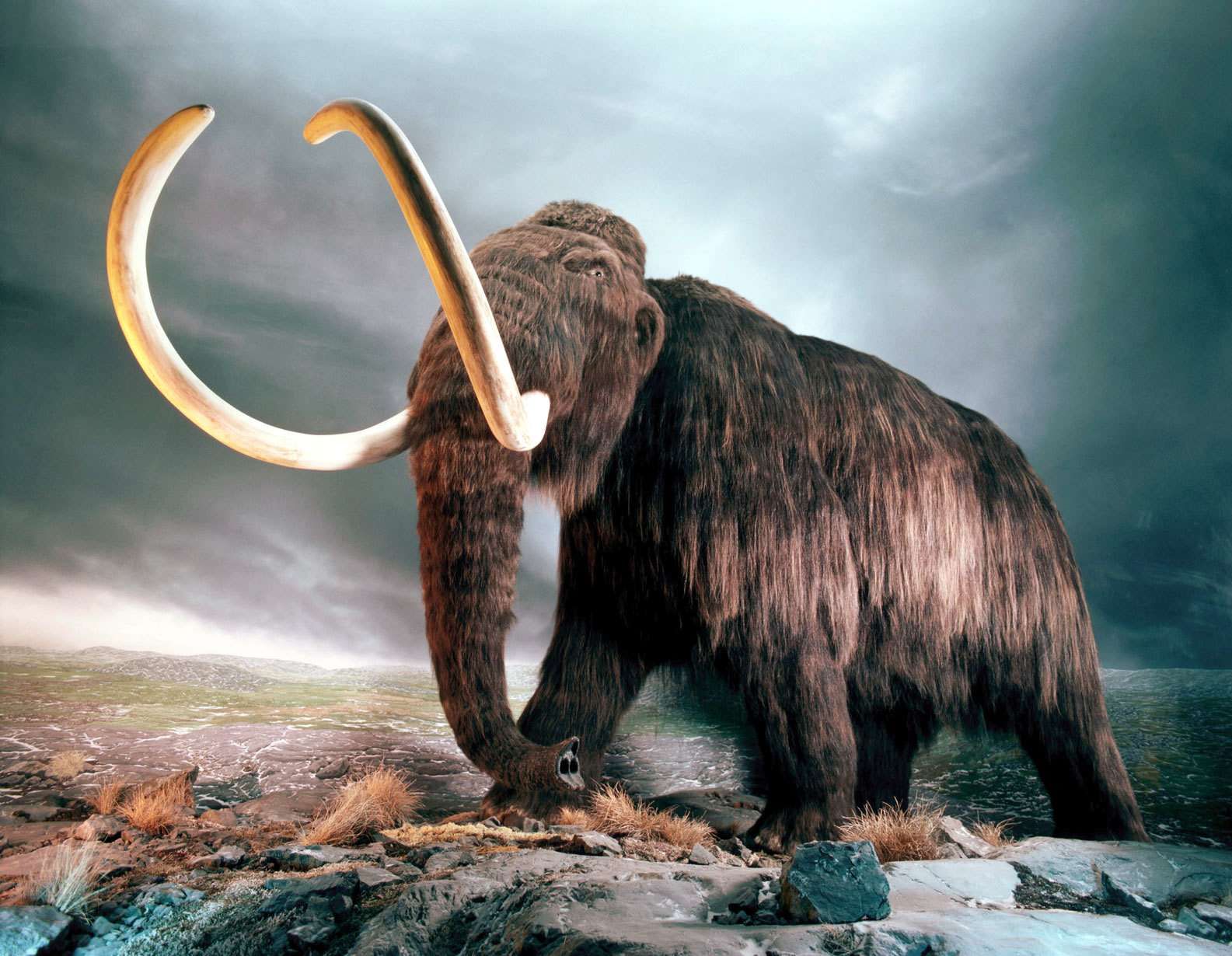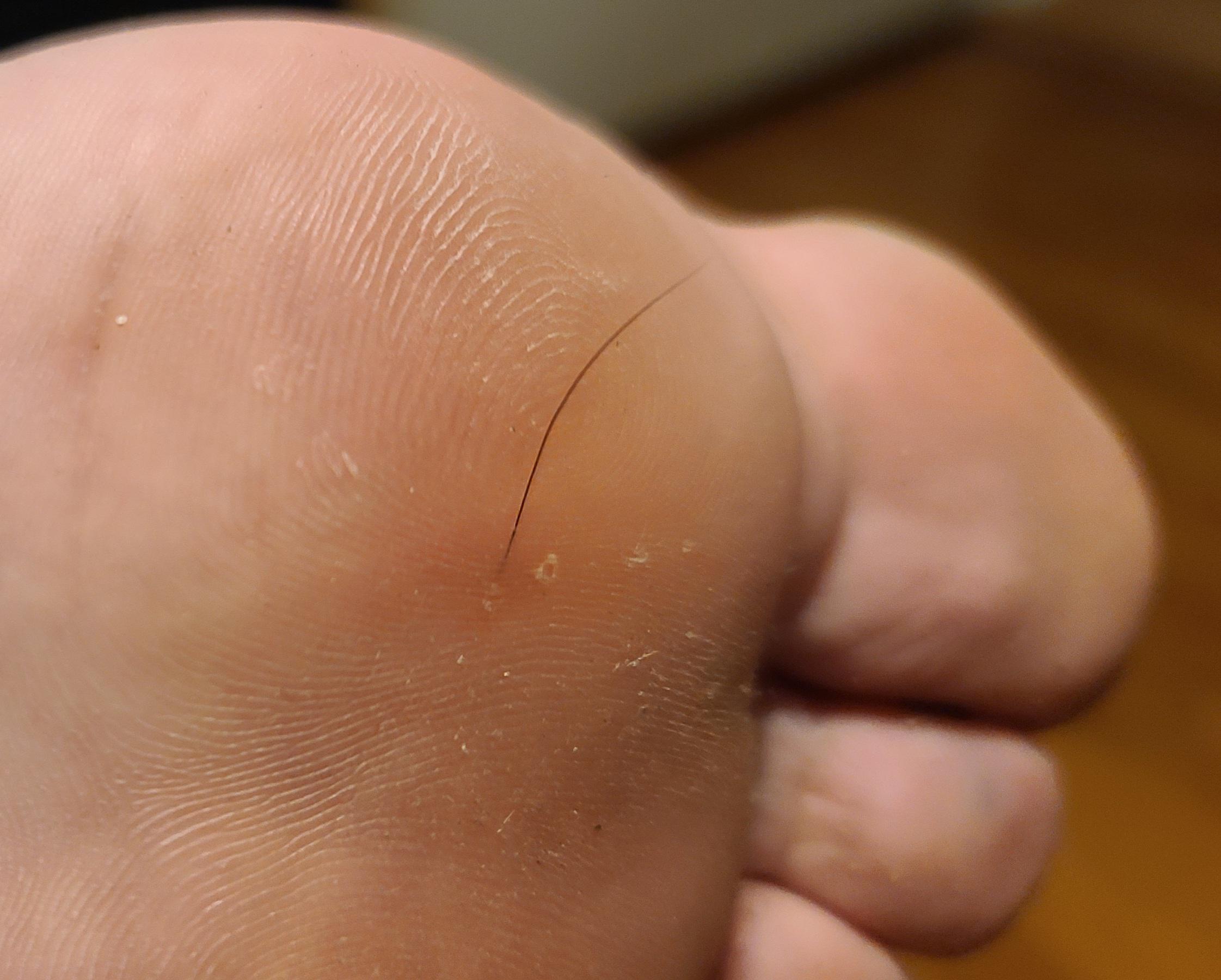Home>Science>The Surprising Evolution Of Elephant Hair: From Woolly Mammoths To Today’s Smooth Giants


Science
The Surprising Evolution Of Elephant Hair: From Woolly Mammoths To Today’s Smooth Giants
Published: January 11, 2024
Explore the fascinating evolution of elephant hair, from the woolly mammoths of the past to the sleek giants of today. Discover the scientific insights behind this remarkable transformation.
(Many of the links in this article redirect to a specific reviewed product. Your purchase of these products through affiliate links helps to generate commission for Regretless.com, at no extra cost. Learn more)
Table of Contents
Introduction
Elephants are among the most majestic and captivating creatures on our planet. Their sheer size, intelligence, and complex social structures have fascinated humans for centuries. However, beyond their impressive physical attributes and social behaviors, there exists a fascinating aspect of these gentle giants that often goes unnoticed: their hair.
From the ancient woolly mammoths to the modern-day African and Asian elephants, the evolution of elephant hair has been a remarkable journey shaped by environmental changes and survival strategies. While the image of elephants may conjure up visions of smooth, leathery skin, their bodies are actually adorned with a sparse but significant covering of hair that serves various crucial functions.
In this article, we will delve into the surprising evolution of elephant hair, tracing its roots back to the woolly mammoths and exploring its role in the survival and communication of modern elephants. We will unravel the mysteries behind this seemingly inconspicuous feature and shed light on the remarkable adaptations that have allowed elephants to thrive in diverse habitats across the globe.
Join us on an intriguing exploration of the intricate world of elephant hair, where we will uncover the hidden significance of this often overlooked aspect of these magnificent creatures.
The Woolly Mammoth: Ancestor of Modern Elephants
The story of elephant hair's evolution begins with the woolly mammoth, a distant ancestor of today's elephants. The woolly mammoth, scientifically known as Mammuthus primigenius, roamed the Earth during the last ice age, approximately 400,000 years ago. These colossal creatures were well-adapted to the harsh, frigid environments of the Pleistocene era, sporting long, shaggy coats of hair that provided insulation against the biting cold.
The woolly mammoth's thick, coarse hair, which could measure up to 3 feet in length, served as a vital protective layer, shielding them from the extreme temperatures prevalent in their icy habitats. This impressive fur coat not only provided insulation but also offered camouflage, allowing these ancient behemoths to blend seamlessly into the snow-covered landscapes, evading predators and ambushing their herbivorous prey.
As the ice age waned and the Earth's climate underwent significant changes, the woolly mammoths faced a formidable challenge to adapt to the shifting environmental conditions. With the gradual disappearance of their icy habitats, these magnificent creatures began to dwindle in numbers, ultimately succumbing to extinction around 4,000 years ago.
Despite the woolly mammoth's demise, its genetic legacy lives on in the modern-day elephants that grace our planet. Through the intricate process of evolution, the descendants of the woolly mammoths gradually shed their thick, shaggy coats, evolving to thrive in a variety of climates and terrains. This gradual transformation gave rise to the African and Asian elephants we know today, each uniquely adapted to their respective habitats.
The woolly mammoth's robust, insulating hair laid the foundation for the evolution of elephant hair, shaping the genetic blueprint of their descendants and influencing their survival strategies. This remarkable genetic inheritance has left an indelible mark on the modern elephants, endowing them with a rich heritage that traces back to the awe-inspiring era of the woolly mammoths.
As we unravel the intricate tale of elephant hair, the profound influence of the woolly mammoth on the evolution of modern elephants becomes increasingly apparent. The legacy of these ancient giants continues to resonate through the ages, woven into the very fabric of the majestic elephants that roam our world today.
The Purpose of Elephant Hair
The purpose of elephant hair extends far beyond mere aesthetic or superficial functions. Despite their seemingly sparse distribution, the hair that adorns the bodies of elephants plays a crucial role in their survival and well-being.
One of the primary functions of elephant hair is thermoregulation. While modern elephants lack the dense, insulating coats of their woolly mammoth ancestors, their hair still contributes to temperature regulation. In hot, arid environments, the sparse hair covering helps to dissipate heat and prevent overheating, acting as a natural cooling mechanism. Conversely, in colder climates, the hair provides a degree of insulation, helping elephants maintain their body temperature in chilly conditions. This adaptive feature allows elephants to thrive in a diverse range of habitats, from the scorching savannahs of Africa to the lush, humid jungles of Asia.
Moreover, elephant hair serves as a form of protection against external elements. The coarse texture of the hair provides a barrier against insects, dust, and harmful UV rays, shielding the elephant's skin from potential irritants and sun damage. In addition, the hair can act as a deterrent to biting insects, offering a degree of defense against bothersome pests that can carry diseases or cause discomfort.
Beyond its physical functions, elephant hair also plays a surprising role in sensory perception. The hair follicles are rich in nerve endings, allowing elephants to sense changes in their environment, such as air currents and nearby objects. This heightened sensitivity contributes to the elephant's acute awareness of its surroundings, enhancing its ability to navigate through its habitat and detect potential threats or sources of sustenance.
Furthermore, the unique texture and arrangement of elephant hair have been found to aid in the adherence of environmental debris, such as dust and mud. This seemingly incidental function actually benefits elephants by providing a layer of natural sunscreen and insulation, further enhancing their resilience in challenging environments.
In essence, the purpose of elephant hair transcends mere aesthetics, encompassing vital roles in thermoregulation, protection, sensory perception, and environmental adaptation. This seemingly unassuming feature embodies the remarkable adaptability and ingenuity of these magnificent creatures, underscoring the intricate web of evolutionary marvels that have shaped the modern-day elephants.
The Evolution of Elephant Hair
The evolution of elephant hair is a testament to the remarkable adaptability and resilience of these majestic creatures. As descendants of the woolly mammoths, modern elephants have undergone a fascinating transformation in their hair composition and distribution, reflecting the diverse habitats and environmental challenges they have encountered throughout their evolutionary journey.
In the wake of the woolly mammoth's extinction, the genetic legacy of their robust, insulating hair continued to influence the evolution of elephants. Over time, the once dense and shaggy coats of their ancestors gradually gave way to a sparser, more strategically distributed covering. This evolution was driven by the need to thrive in a variety of climates and terrains, leading to the development of distinct hair characteristics in African and Asian elephants.
African elephants, inhabiting the vast savannahs and grasslands of sub-Saharan Africa, boast sparser and coarser hair compared to their Asian counterparts. This adaptation reflects the hot, arid environments they navigate, where the hair's texture and distribution aid in dissipating heat and providing protection against the harsh sun and dust. In contrast, Asian elephants, thriving in the lush, forested regions of South and Southeast Asia, feature finer and softer hair that offers insulation in humid, tropical climates.
The evolutionary trajectory of elephant hair also mirrors the intricate interplay between genetic adaptations and environmental pressures. As elephants migrated and diversified across various habitats, natural selection acted as a driving force, favoring traits that conferred a survival advantage. This selective pressure sculpted the hair characteristics of elephants, equipping them with the means to regulate their body temperature, protect their skin, and navigate their surroundings with heightened sensory perception.
Furthermore, the evolution of elephant hair underscores the dynamic relationship between form and function. The sparse but strategically distributed hair covering of elephants exemplifies nature's exquisite optimization, where every aspect of their physiology is finely tuned to meet the demands of their ecological niches. This evolution reflects the intricate dance between genetic heritage and environmental exigencies, culminating in the finely tuned adaptation of elephant hair to diverse and challenging landscapes.
In essence, the evolution of elephant hair stands as a testament to the enduring legacy of the woolly mammoths and the remarkable journey of adaptation undertaken by modern elephants. This evolution encapsulates the awe-inspiring fusion of genetic inheritance, environmental pressures, and the intricate dance of natural selection, shaping the very fabric of these iconic creatures.
Adaptations for Survival
The adaptations for survival exhibited by elephants are a testament to their remarkable resilience and evolutionary prowess. These majestic creatures have undergone a series of remarkable adaptations that have enabled them to thrive in diverse and often challenging environments.
One of the most striking adaptations for survival is the development of specialized teeth. Elephants possess a set of formidable molars that are well-suited for grinding tough vegetation, a staple of their herbivorous diet. These molars continuously grow and wear down over time, ensuring that elephants can efficiently extract nutrients from the coarse plant material they consume. This adaptation has been crucial to the survival of elephants, enabling them to sustain their massive bodies on a diet primarily composed of fibrous vegetation.
In addition to their dental adaptations, elephants have evolved an intricate social structure that contributes significantly to their survival. These highly intelligent and empathetic creatures form tight-knit family groups, with strong bonds between individuals. This social cohesion not only fosters emotional support and protection but also facilitates the sharing of vital knowledge, such as migration routes and available food and water sources. The collaborative nature of elephant societies has been instrumental in their ability to navigate and adapt to changing landscapes, ensuring the survival of the group as a whole.
Furthermore, the physical adaptations of elephants, including their impressive size and strength, serve as formidable defenses against predators. Their sheer bulk acts as a deterrent to many would-be attackers, while their long, powerful tusks can be used for defense and foraging. These adaptations have allowed elephants to carve out a niche as apex herbivores in their respective habitats, minimizing the threats they face from natural predators.
Moreover, elephants possess remarkable adaptations for water retention and thermoregulation. Their ability to store and efficiently utilize water in arid environments has been a crucial survival adaptation, enabling them to endure prolonged periods of drought. Additionally, their large ears, which are rich in blood vessels, serve as effective thermoregulatory organs, allowing them to dissipate excess heat and maintain a stable body temperature in the sweltering heat of their habitats.
In essence, the adaptations for survival displayed by elephants underscore their extraordinary ability to thrive in diverse and often unforgiving ecosystems. From specialized teeth and social structures to formidable physical defenses and physiological adaptations, elephants have honed a suite of survival strategies that have allowed them to endure and flourish in the face of formidable challenges. These adaptations stand as a testament to the enduring legacy of these remarkable creatures and their remarkable capacity to navigate the complex tapestry of the natural world.
The Role of Hair in Elephant Communication
The enigmatic world of elephant communication extends far beyond vocalizations and body language, encompassing a surprising and often overlooked element: their hair. While the significance of elephant vocalizations and gestures is well-documented, the role of their hair in communication is a fascinating aspect that merits exploration.
Elephant hair, despite its sparse distribution, plays a subtle yet crucial role in intra-species communication. The tactile nature of hair serves as a conduit for conveying nuanced messages within elephant herds. Through gentle and deliberate interactions, elephants utilize their trunks and sensitive tactile perception to engage in subtle communication facilitated by the presence of hair.
In the context of social bonding, the act of intertwining trunks, known as "trunk twining," serves as a profound form of tactile communication among elephants. During this intimate gesture, the elephants come into contact with each other's hair, allowing them to exchange subtle cues and reinforce social bonds. This tactile interaction, facilitated by the presence of hair, fosters a sense of unity and cooperation within the herd, strengthening the intricate fabric of their social structure.
Furthermore, the tactile sensitivity of elephant hair enables individuals to convey emotions and intentions through gentle, tactile interactions. Whether it's a reassuring touch between family members or a subtle nudge to communicate a message, the presence of hair enhances the tactile communication repertoire of elephants, allowing them to express empathy, reassurance, and solidarity within their social groups.
Moreover, the tactile feedback provided by hair contributes to the nuanced dynamics of dominance and hierarchy within elephant herds. Through subtle tactile interactions, elephants convey deference, respect, and social standing, shaping the intricate dynamics of their social structure. The presence of hair enriches these tactile exchanges, adding a layer of complexity to the subtle cues and signals that define the social order within elephant communities.
In essence, the role of hair in elephant communication unveils a captivating dimension of their social dynamics, where tactile interactions facilitated by the presence of hair serve as a conduit for conveying emotions, reinforcing social bonds, and navigating the intricate tapestry of their social structure. This subtle yet profound aspect of elephant communication underscores the remarkable depth and complexity of their social interactions, shedding light on the nuanced ways in which these gentle giants navigate their intricate social world.
Conclusion
In conclusion, the evolution of elephant hair stands as a testament to the enduring legacy of the woolly mammoths and the remarkable journey of adaptation undertaken by modern elephants. From the shaggy coats of their ancient ancestors to the sparse but strategically distributed hair of today's giants, the evolution of elephant hair encapsulates the awe-inspiring fusion of genetic inheritance, environmental pressures, and the intricate dance of natural selection.
The purpose of elephant hair transcends mere aesthetics, encompassing vital roles in thermoregulation, protection, sensory perception, and environmental adaptation. This seemingly unassuming feature embodies the remarkable adaptability and ingenuity of these magnificent creatures, underscoring the intricate web of evolutionary marvels that have shaped the modern-day elephants.
Moreover, the adaptations for survival displayed by elephants underscore their extraordinary ability to thrive in diverse and often unforgiving ecosystems. From specialized teeth and social structures to formidable physical defenses and physiological adaptations, elephants have honed a suite of survival strategies that have allowed them to endure and flourish in the face of formidable challenges. These adaptations stand as a testament to the enduring legacy of these remarkable creatures and their remarkable capacity to navigate the complex tapestry of the natural world.
Furthermore, the role of hair in elephant communication unveils a captivating dimension of their social dynamics, where tactile interactions facilitated by the presence of hair serve as a conduit for conveying emotions, reinforcing social bonds, and navigating the intricate tapestry of their social structure. This subtle yet profound aspect of elephant communication underscores the remarkable depth and complexity of their social interactions, shedding light on the nuanced ways in which these gentle giants navigate their intricate social world.
In essence, the evolution of elephant hair and its multifaceted significance offer a compelling glimpse into the intricate world of these gentle giants. From its humble origins in the era of woolly mammoths to its pivotal role in the survival, communication, and social dynamics of modern elephants, the story of elephant hair is a testament to the enduring legacy of these iconic creatures. As we marvel at the majestic elephants that roam our world today, let us not overlook the subtle wonders of their hair, which bear the indelible imprint of a remarkable evolutionary journey shaped by the forces of nature.














